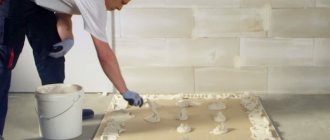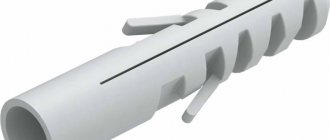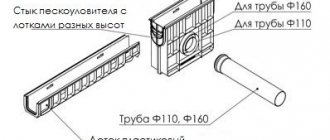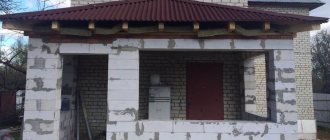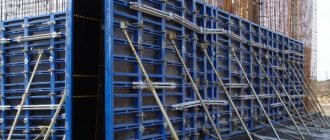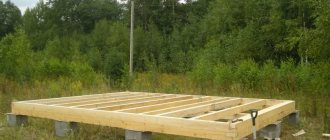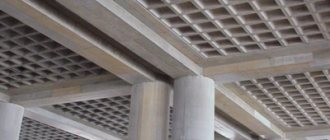In this video, we conducted a series of pull-out tests on both metal and plastic dowels for foam and gas blocks.
List of those tested:
- SORMAT KBT 6
- SORMAT KBTM 6 (discontinued)
- FISCHER GB 10
- Dowel PB 10x60
- Metal dowel GB 8x60 (herringbone)
- TOX GB 10x55
- FISCHER FPX M8
- TOX APOLLO VLF 8x100
- Screw GB 8x100
Aerated concrete, foam concrete, cinder block, expanded clay concrete - all these are loose bases with a porous structure, in which not every fastener can withstand high loads. When we need to fix a radiator, TV, curtain rod or sanitaryware, it is important to choose a fastener that will support the load from the suspended objects. Fastening stores offer us many options. What if the fastener we have chosen fails? – How much will the damage from a wrong choice cost us? Testing different types of aerated concrete fasteners will help determine which one is best.
We tested each fastener for two types of load - shear and pullout. Each mount has been tested three times! The test was carried out in aerated concrete blocks with a density of 500 kg/mm³ (grade D500).
When choosing fastenings for aerated concrete walls, take into account such features
When choosing hardware, take into account the strength of the working surface, the dimensions of the parts and their resistance to corrosion.
The higher the density of the material, the stronger the aerated concrete. This indicator sets the load limits on the fastener. Technical characteristics in digital terms are indicated on the packaging of building blocks after the letter D.
The strength of the connection is affected by the size of the dowels. Thus, when fixing massive structures, products of large diameters and lengths are used.
The resistance of fasteners to corrosion ensures the possibility of their use when installing external structures and arranging unheated premises.
Which is better
It is impossible to say unequivocally which is better. Because when choosing, you need to take into account the type of structures and the specifics of the tasks being solved. In general, we use frame dowels for windows and doors; plastic and nylon are suitable for lightweight structures; for heavy load-bearing facade systems we choose metal options.
Pay attention to the correspondence of the length of the dowel to the thickness of the walls and the materials being connected. If the size of the expanding part is not enough, then there can be no talk of any reliability of fastening. And one more thing to remember: always buy dowels with a 10% margin, as some of them will definitely be damaged during installation.
Types of fasteners and performance of work
The type of product is selected depending on the expected load:
- for fastening hanging mirrors or lamps, nylon dowels with a cross-section of up to 12 mm are suitable;
- when installing pipelines and bulky objects, choose metal parts;
- frame types of fastenings are used to fix window and door frames;
- universal facade dowels are used when installing external profiles for facing slabs;
- Only light objects are attached to wood screws - photo frames or decorative elements.
Installation is carried out in several stages.
In order for the products to fit tightly into the base, it is necessary to drill the holes correctly. To do this, it is best to use a hammerless drill or a hammer drill with the impact turned off. The drill should have a cross-section 1 mm smaller than the fastener itself. The only exception is steel hardware. For them, the hole will be reduced by 2 mm.
After cleaning the recess from concrete dust, install a dowel. The plastic fastener is screwed in using a screwdriver. Metal parts are driven into the mounting hole with a hammer. During the work, it is necessary to ensure that the product does not warp.
At the final stage, screw in a self-tapping screw or a standard mounting bolt. In this case, it is not advisable to use an electric tool, since when connecting to an aerated concrete block, the screw element may be damaged.
Famous manufacturers
The cost largely depends on the popularity of the manufacturer and its advertising costs. At the same time, in terms of strength indicators and load-bearing capacity, the products of Russian and foreign companies do not differ.
Among domestic manufacturers we highlight:
- , offering a large selection of fasteners and tools for construction work;
- RosDubel enterprise, specializing in dowels, anchors, and other types of elements for connecting various materials and structures.
Good options are offered by Polish companies, for example Koelner, Rawlplug, which produces plastic products, Modeco, which produces metal elements. The products of the Swiss brand Mungo also deserve attention. Manufacturers from France (SNR) and Finland (Sormat) are not far behind them.
When purchasing, pay attention to the amount of fasteners in the package. By purchasing such a product individually, you risk overpaying 1.5-2 times. Choose sets of 200-500 pieces: it will be cheaper.
Dowel
The part is a spiral-shaped bushing with ribs on the surface. At the moment the screw is screwed in, they expand, due to which they firmly fit into the soft surface of the base. Such fasteners can be made of galvanized steel or plastic.
The first option is the most common and is considered the most expensive. It is used when installing profiles, installing attachments and furniture, and fixing various pipelines. Such fasteners have become widespread in fire-hazardous spaces.
Metal dowels for aerated concrete are produced in 2 modifications, which differ in design features and installation methods. The parts can either be screwed into the base or driven into it. The latter option is used if the aerated concrete floor is planned to be equipped with a collet.
Based on the shape of the fixation ribs, fasteners with a classic helical spiral and dowels in the form of a cone, equipped with spiral blades, are distinguished. The design of metal elements also provides for the presence of a locking flange or cuff, thanks to which the part will not rotate.
The only drawback of such fasteners is that they are susceptible to rust.
Corrosion resistance is the main advantage of plastic products. The materials used for them are polypropylene and polyethylene. The positive characteristics of the parts include their efficiency, environmental friendliness, and immunity to aggressive environments. Such dowels are not intended for outdoor work, since with the onset of cold weather the plastic may burst.
A separate group consists of fasteners for aerated concrete made of nylon. They are more wear-resistant, so they can be used for cladding facades. Together with them, galvanized screw elements with 2 types of heads are used - countersunk or hexagonal. The disadvantage of this type of fastening is the high price.
Depending on the scope of application, there are several types of dowels:
- Universal
. It can be mounted in any concrete surface. In a solid base, fixation occurs in a standard way. In a cellular coating, the product is rolled into a persistent knot. However, the load-bearing capacity of universal dowels is lower than that of spacer elements.
- A dowel-nail that has a wide range of applications. At the moment of fixation, a nail is inserted into the fastener, rather than a screw being screwed in. In order to avoid turning the part, use a sleeve.
- "Pancake-like" structure
frame dowelsallows you to reduce the load on the porous surface of the block.
Relevance of mounting bushings
Foam concrete is a porous material in its structure. That is, it consists of many thin partitions between which air is contained. Such a structure has a positive effect on thermal insulation and acoustic properties, and low weight for structural blocks. However, the pore walls are not strong enough to cope with the localized pressure from the loaded fastener. After hanging an object on screws or nails, the foam concrete begins to gradually deteriorate (crumble). To eliminate these consequences, a seat in the form of dowels for foam concrete is prepared for the hardware. They have a large area in contact with the surface of the hole, which reduces the load on the pores and allows them to be kept intact.
Classic version of dowel-nails Source stroibum.com
The mounting anchor and installation method will depend on the future load
If you need to install heavy equipment or an entrance door, it makes sense to use chemical fasteners. Drive-in anchors for aerated concrete with an anti-corrosion coating are suitable for fixing suspended ceilings, pipes, kitchen furniture, and ventilation systems. They create a durable and effective fastening with a strength of 2-7 N/mm.
Mechanical anchor
Such an element has the shape of a rod, which is screwed or hammered into the work surface. In this case, the load is evenly distributed over the entire mounting area. When the screw is screwed in, the edge sections split and the anchor takes on the shape of a butterfly.
The technology ensures good fixation in a pre-drilled hole. To prevent its further expansion, fasteners are used, the edges of which prevent further advancement of the threaded part.
Chemical anchor
This type of product is considered the most reliable and durable method of fastening in porous materials. In addition to the steel base, it has a special tube with an adhesive substance, which includes organic polymers and synthetic resins. The choice of composition depends on the operating conditions of the fastener.
Certain types of adhesives, in particular those based on vinylester resin, can be used to form anchor connections operated at subzero temperatures.
The convenience of using glue based on such a resin also lies in the fact that it can be used to secure anchor bolts even in wet holes, and this does not create internal stresses in the building structure material. An important factor is that these resins do not contain styrene, which is harmful to health.
The bearing capacity of the element can exceed 400 kg.
The principle of installation of chemical anchors is similar to the installation of mechanical products.
Video description
This video demonstrates a simple test of three types of fasteners for foam block structures:
Features of installation work
Taking into account the porous structure of the “soft” base, a number of rules and recommendations must be followed during installation work. For example, before immersing a chemical anchor into a seat, it is necessary to carefully remove all dust and debris from it.
Blowing out a hole for a chemical anchor Source hilti.com.my
There are three main points regarding hole formation:
- for heavy and loaded structures, a minimum distance of 50-80 mm is maintained from the edge of the foam block;
- the depth of the seat for the dowels must be at least 60 mm;
- The width of the hole is selected taking into account the diameter of the part of the selected bushing immersed in the material - 2-3 mm less than the rod.
To screw in self-tapping screws, almost every craftsman today uses screwdrivers or cordless screwdrivers. In the case of a porous base, this approach is not always correct. Due to the mechanization of the process, there is a risk of the dowel turning in the foam block, which means damage to the walls inside the hole. This result will not meet the expected reliability.
If you need to fasten loaded or heavy objects to the wall, experts recommend considering the option of through-mounting into a foam block. Threaded rods, nuts and wide washers are used here. Another option is a chemical anchor in combination with metal bushings for a screw or bolt. The length of the dowel is selected with a minimum limit of 150 mm.
Work order
Work algorithm:
- a hole of the required depth is drilled in the wall, its bottom is slightly expanded by oscillating movements of the drill;
- construction dust is blown out of the hole, and a sleeve is inserted into its neck;
- the cavity is filled with an adhesive solution using a mounting gun or capsules are installed here;
- an anchor rod is immediately inserted into it.
Marking for such fasteners must be done accurately and carefully, since it will be impossible to pull it out of the wall.
The nut and washer are installed after 2 days, when the mass has completely hardened.
Features of adhesive mixtures based on epoxy resin
The compositions are among the most popular means of fixing anchor rods. They are used in the installation of complex technical structures, for securing concrete elements and noise-reducing screens. This substance was specially developed for blocks of class above C20-25.
The features of the material that determined its demand include:
- Ability to operate fastenings in wet environments and under water.
- No toxic substances.
- Acceptability of use during outdoor work.
- Versatility. During installation, you can use smooth and threaded fastening systems.
- This technique does not create tension inside the element.
Recommendations from experienced builders
Experienced builders recommend, if possible, to avoid attaching heavy structures to the foam block. If this is not possible, then you need to use high-quality chemical anchors for installation. Also, builders do not recommend using power tools to screw in hardware. A powerful screwdriver is capable of pulling out even an installed chemical anchor from a foam block, not to mention ordinary dowels.
The video below compares the reliability of fastening a chemical anchor, self-tapping screws for foam concrete and metal dowels for foam concrete:
Did you manage to solve your problem using the recommendations from the article?
Yes!
46.21%
No. More answers required. I'll ask in the comments now.
38.35%
Partially. There are still questions. I'll write in the comments now.
15.45%
Voted: 751

